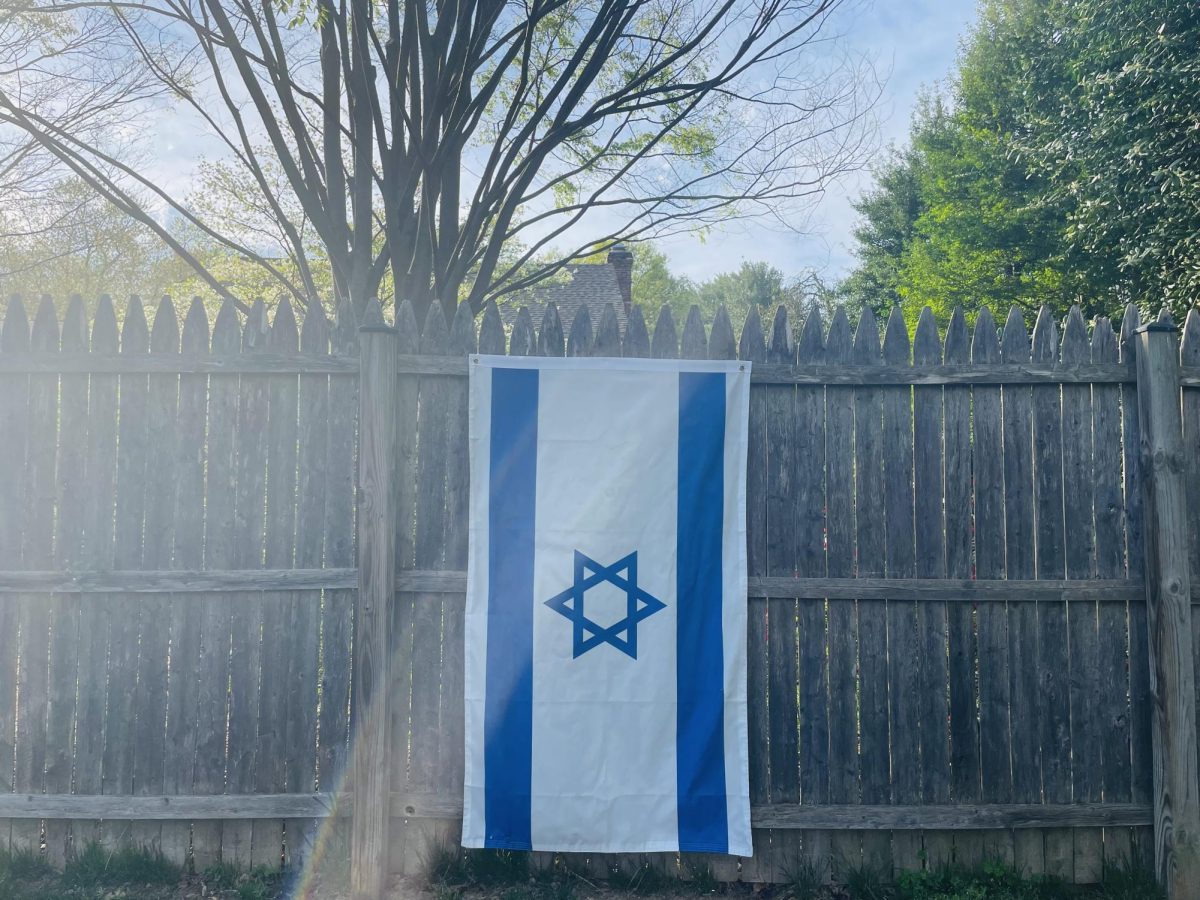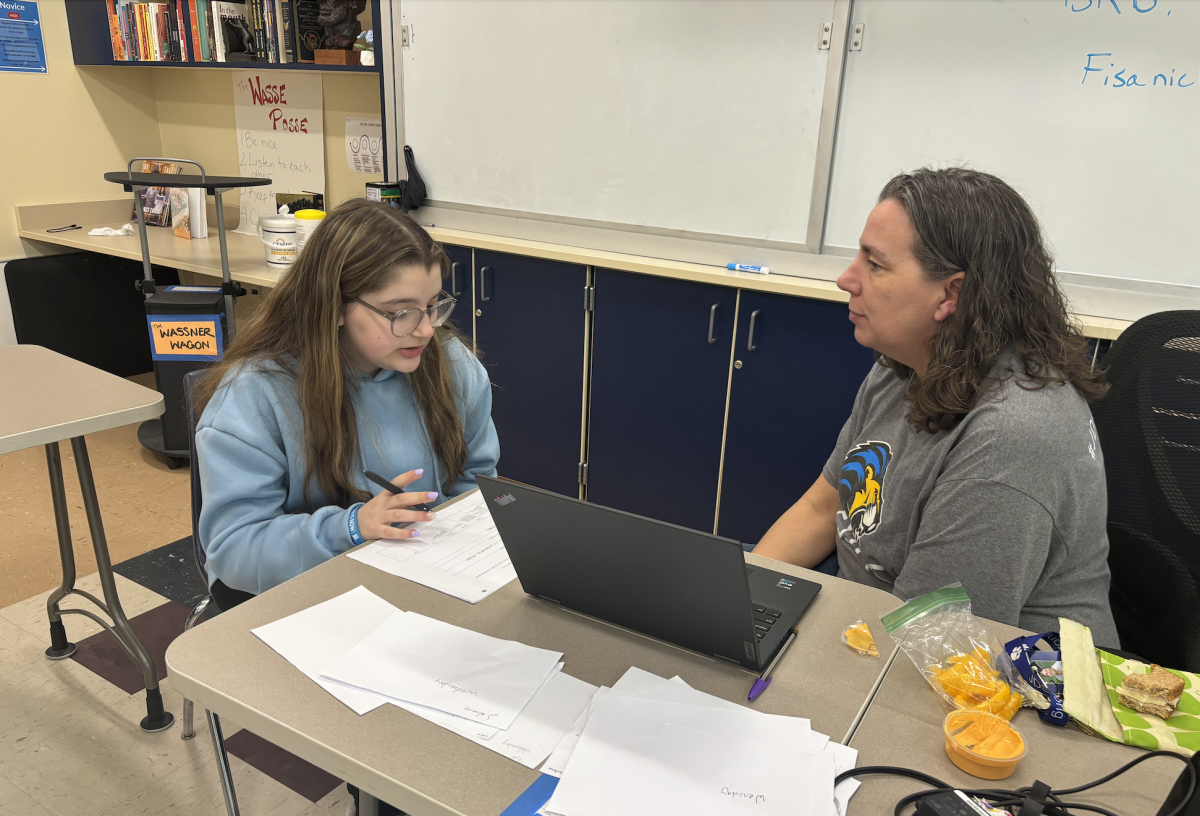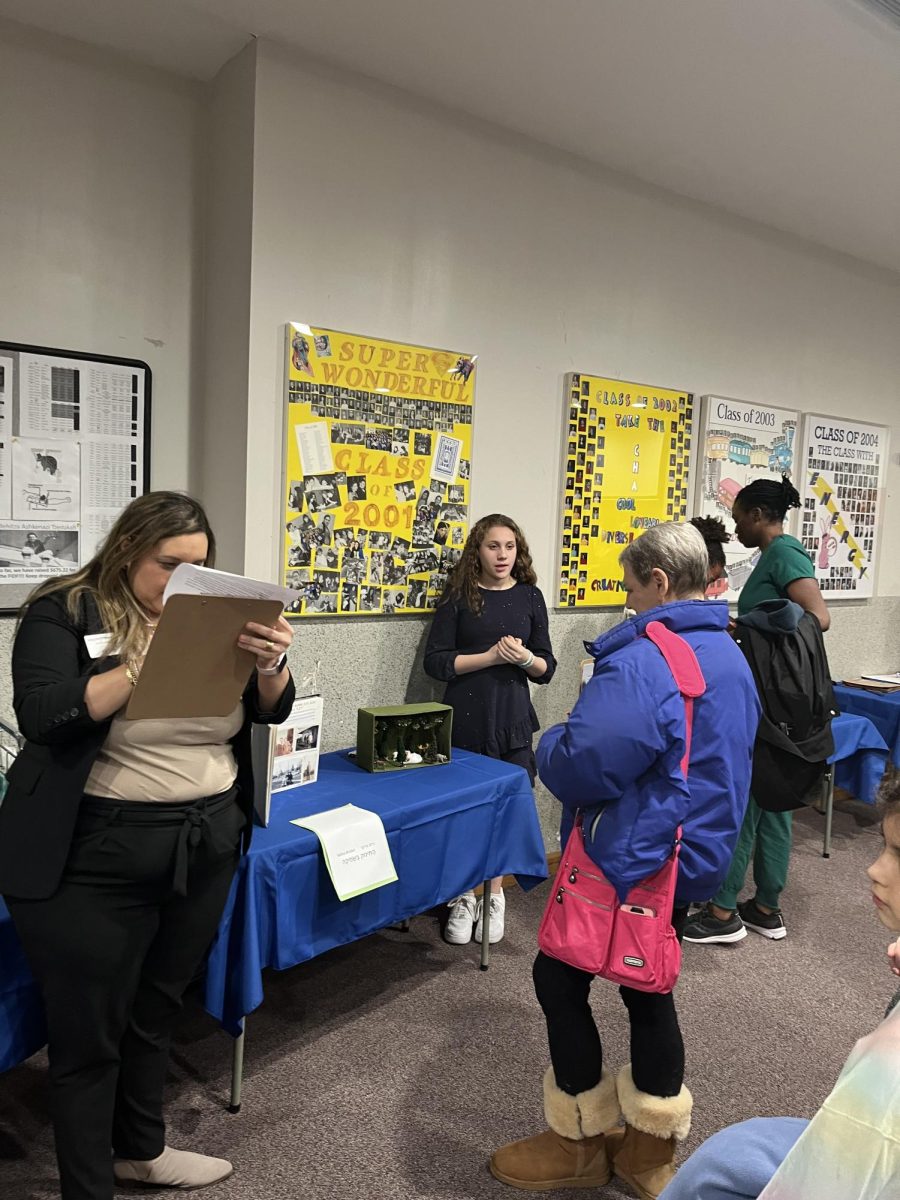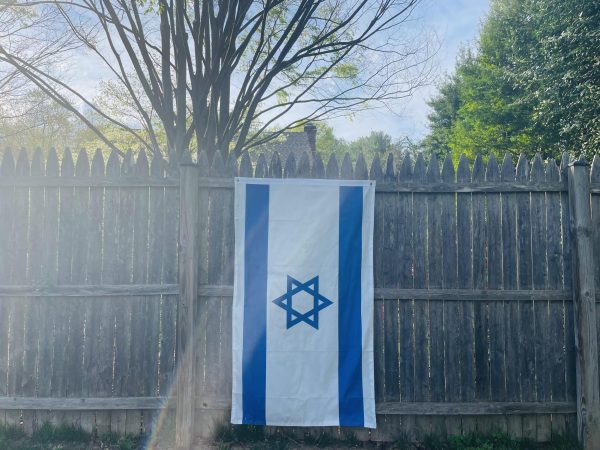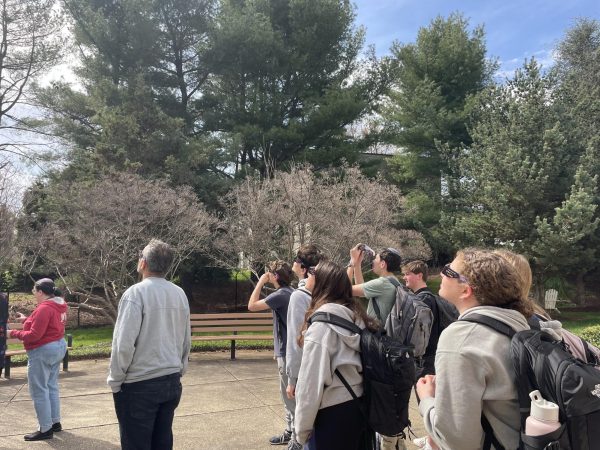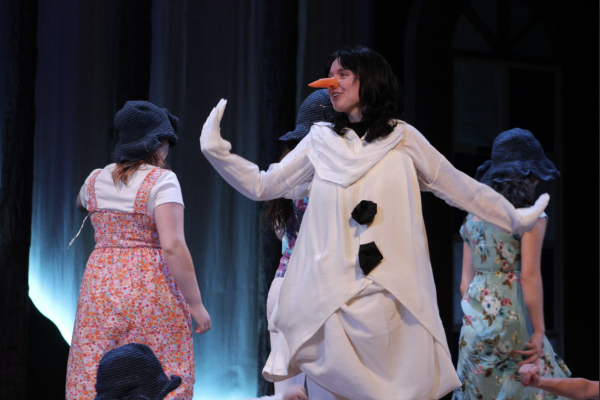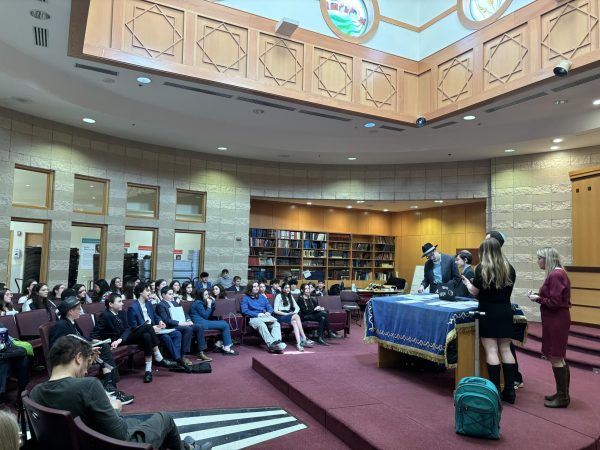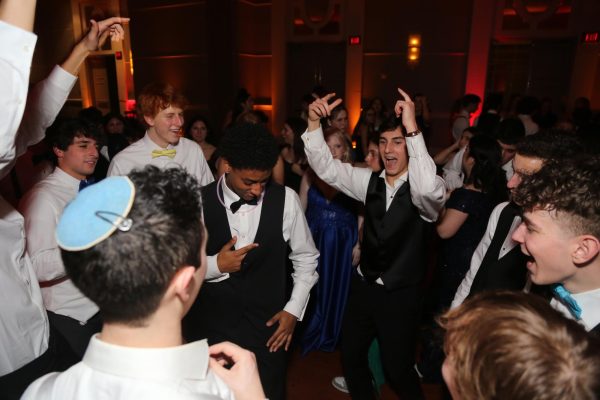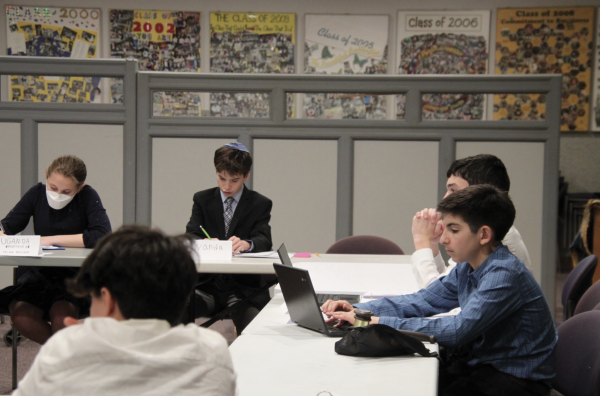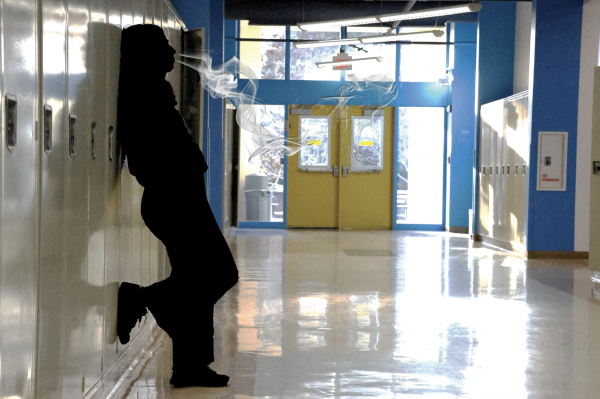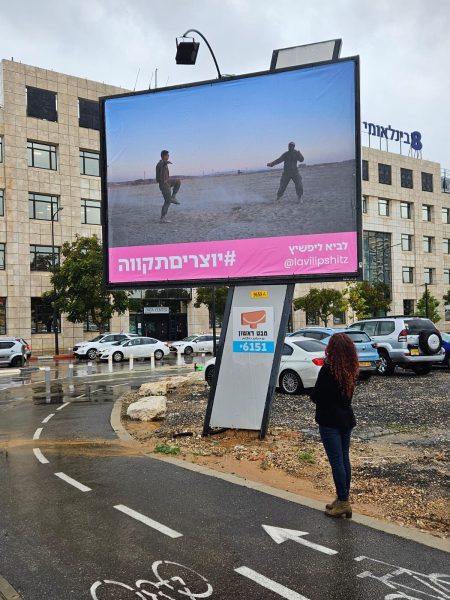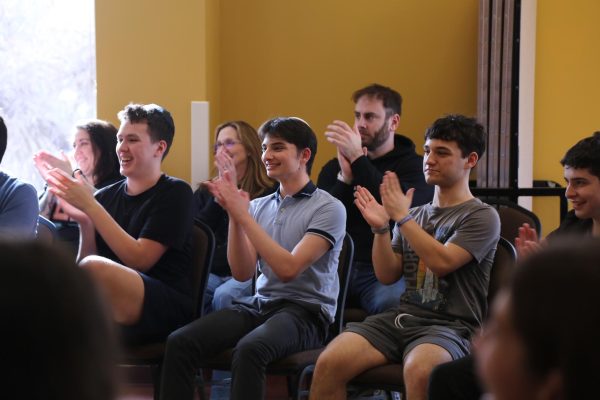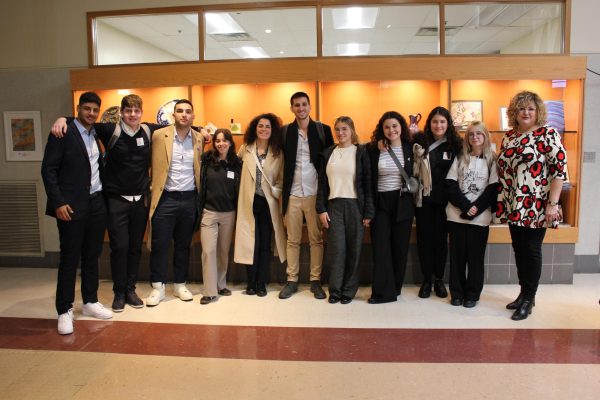Ninth Grade Elections Swayed by Campaign Posters
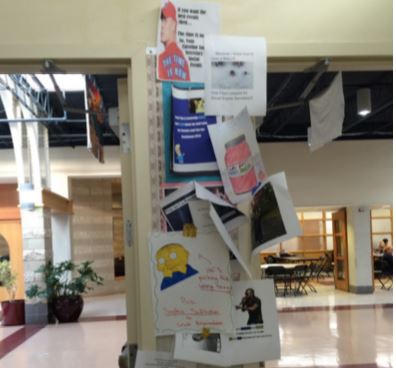
The day of elections, the bulletin board at the entrance to the freshman hallway was crowded with campaign posters advertising the many different candidates.
November 16, 2015
Designing campaign posters proved to be an essential component in the class of 2019’s grade government elections Nov. 4.
Interim High School Principal Roz Landy told students to vote for the candidate they believed would work the hardest for the grade. Campaign posters and speeches were alternate ways for students to base their votes.
“Unfortunately, I think that students vote for who is most popular. I certainly wish that they took it more seriously, listened to the speeches and voted for the student who will do the best job for the grade or the school,” Landy said.
Nominees could create a maximum of six campaign posters to be hung throughout the building, provided they were on bulletin boards and approved by Landy or a grade advisor.
“One thing that was difficult [about making campaign posters] was coming up with catchy slogans with our names that were not overused,” freshman Vice President Maya Cohen-Shields said.
Cohen-Shields designed two posters with her co-Vice President Jacob Block. One design was a flow chart that concluded with “Vote for Maya and Jake” and the second was a picture of the two of them with a campaign slogan based on wordplay on their two last names: “COSH-ion Future Vice Presidents Coming Around the BLOCK.”
One priority for candidates was picking a location where their poster would be most noticed by freshman. Areas that freshman pass by everyday, like the bulletin boards in the ninth grade hallway, were overloaded with posters, whereas boards in science wing had only one or two.
“We hung [our posters] up at the end of the day once many people had already hung theirs up, the bulletin boards in our hallway were already very full and it wouldn’t make much of a difference to have them there. We ended up putting them by the bathrooms, so when people stopped for water or the bathroom they notice them,” Cohen-Shields said.
Although most candidates choose to make campaign posters, there was a large variety in method of attracting voters. The posters ranged from handwritten to computer-generated and while some were humorous, others focused on eye-catching designs and slogans.
“The posters show a varying degree of attention and creativity. Some merely say “vote for ____” and others are very thoughtful, clever and catch your eye,” Landy said.
Campaign posters are a way for candidates to show their personality to the grade. While they do not mention a candidate’s qualifications or reasons for running for a position, they allow students to survey the ballot.
“I think if somebody has a really detailed, well put-together poster, it really shows that they want to be your president, they want to work hard for you, and I think that really appeals to the audience. Any well put-together poster or any well-designed poster will really grab my attention and I’d be more likely to vote for them than anyone else,” freshman Ilana Kaplan said.
One concern students have with posters is that they are considered ineffective. Unlike the speeches or paragraphs the students write, posters often do not mention the candidate’s ideas or suggestions for grade government.
“What really matters in the end is the speech you give during elections, and that’s what people are going to listen to, because they may not know your ideas from your poster. But, I think it’s an added bonus to have posters as well,” Kaplan said.
Regardless of their impact on election results, campaign posters are an entertaining way for candidates to inform their fellow students that they are running.
“I don’t think [our posters] made a big difference but it gets people thinking about it,” Cohen-Shields added.



